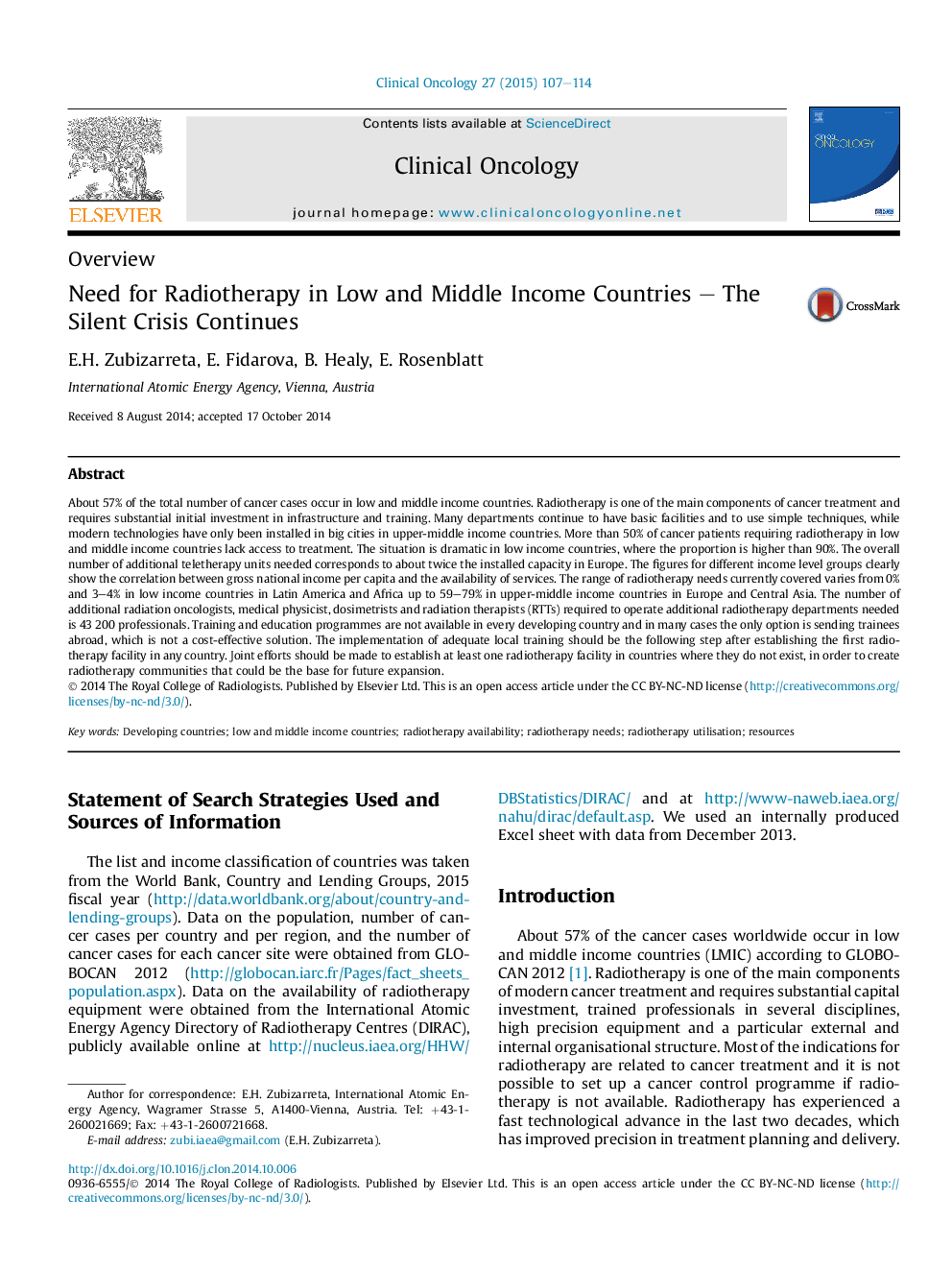| Article ID | Journal | Published Year | Pages | File Type |
|---|---|---|---|---|
| 5698398 | Clinical Oncology | 2015 | 8 Pages |
Abstract
About 57% of the total number of cancer cases occur in low and middle income countries. Radiotherapy is one of the main components of cancer treatment and requires substantial initial investment in infrastructure and training. Many departments continue to have basic facilities and to use simple techniques, while modern technologies have only been installed in big cities in upper-middle income countries. More than 50% of cancer patients requiring radiotherapy in low and middle income countries lack access to treatment. The situation is dramatic in low income countries, where the proportion is higher than 90%. The overall number of additional teletherapy units needed corresponds to about twice the installed capacity in Europe. The figures for different income level groups clearly show the correlation between gross national income per capita and the availability of services. The range of radiotherapy needs currently covered varies from 0% and 3-4% in low income countries in Latin America and Africa up to 59-79% in upper-middle income countries in Europe and Central Asia. The number of additional radiation oncologists, medical physicist, dosimetrists and radiation therapists (RTTs) required to operate additional radiotherapy departments needed is 43 200 professionals. Training and education programmes are not available in every developing country and in many cases the only option is sending trainees abroad, which is not a cost-effective solution. The implementation of adequate local training should be the following step after establishing the first radiotherapy facility in any country. Joint efforts should be made to establish at least one radiotherapy facility in countries where they do not exist, in order to create radiotherapy communities that could be the base for future expansion.
Related Topics
Health Sciences
Medicine and Dentistry
Oncology
Authors
E.H. Zubizarreta, E. Fidarova, B. Healy, E. Rosenblatt,
